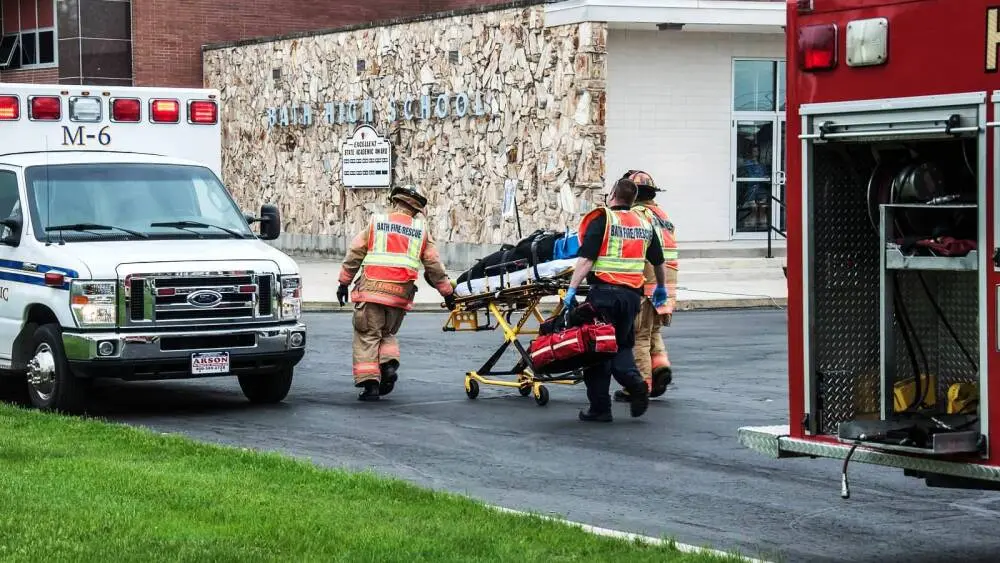When emergencies strike, first responders are the first line of defense between chaos and care. Whether it’s an accident on the highway, a cardiac arrest at a local park, or a structure fire threatening lives, the outcome often hinges not just on training or speed but on equipment.
Having the right tools at the right time can make the difference between life and death, safety and injury, control and chaos. But why, exactly, is proper equipment so vital for first responders?
Let’s break it down.
Image source: EMS1. Ohio First Responders Work to Improve Mental Health, Wellness. 2024. EMS1, Photograph.
1. Lives Depend on It
Time is everything in an emergency. The right equipment allows first responders to act swiftly and effectively stabilizing injuries, restarting hearts, stopping bleeding, and saving lives.
- Example: A properly applied tourniquet can prevent someone from bleeding out in minutes. Without it, even the best training may fall short.
2. Personal Safety
First responders put themselves in dangerous situations exposure to biohazards, fire, violence, and structural collapse is often part of the job. Proper gear isn’t optional it’s what keeps them safe while helping others.
- Example: Nitrile gloves protect against bloodborne pathogens. Fire-resistant gear protects against flashover. Without these, responders risk becoming victims themselves.
3. Efficiency and Speed
The right tools ensure first responders can perform their tasks efficiently, even under stress. From trauma shears that cut through clothing quickly to stethoscopes that pick up faint breath sounds, good gear saves time when seconds count.
- Example: A high-quality flashlight or headlamp can prevent delays in poorly lit environments, allowing immediate care without fumbling for visibility.
4. Professionalism and Preparedness
Showing up with the right tools reflects a first responder’s commitment to the job and inspires trust in the community and colleagues. It’s not just about saving lives it’s about showing you’re ready to do so.
- Example: An EMT with a well-organized jump bag communicates reliability and readiness qualities critical in building patient confidence during high-stress situations.
5. Adaptability in the Field
Emergencies are unpredictable. One minute you’re responding to a motor vehicle accident, the next you’re assisting with a birth or treating an overdose. Having a diverse set of reliable tools helps you adapt to whatever scenario unfolds.
- Example: A multi-tool or utility knife may not seem essential until you’re trapped behind a jammed seatbelt or need to cut a tangled oxygen line.
6. Reduces Risk of Human Error
Even the most experienced first responder can be thrown off by poor or missing equipment. Having the right gear that works as expected reduces the chance of making costly mistakes in high-pressure situations.
- Example: A faulty blood pressure cuff or low-quality stethoscope can lead to inaccurate assessments potentially resulting in improper treatment decisions.
7. Supports Teamwork
First responders rarely work alone. When every team member is equipped and prepared, operations run smoother. Equipment compatibility and availability help teams move in sync, rather than scramble.
- Example: When all team members carry the same brand of radios or tourniquets, communication and coordination become seamless.
Final Thoughts
Being a first responder is not just about courage it’s about preparation. Training is critical, but even the most skilled first responder can’t do much without the proper tools. Carrying the right equipment is about being ready, staying safe, and doing the job well every single time.
For new first responders: start building your gear slowly, prioritizing quality and functionality. For seasoned pros: inspect and maintain your equipment regularly, and mentor others on what truly matters in the field.
Because in the world of emergency response, being equipped isn’t just a matter of readiness it’s a matter of responsibility.

